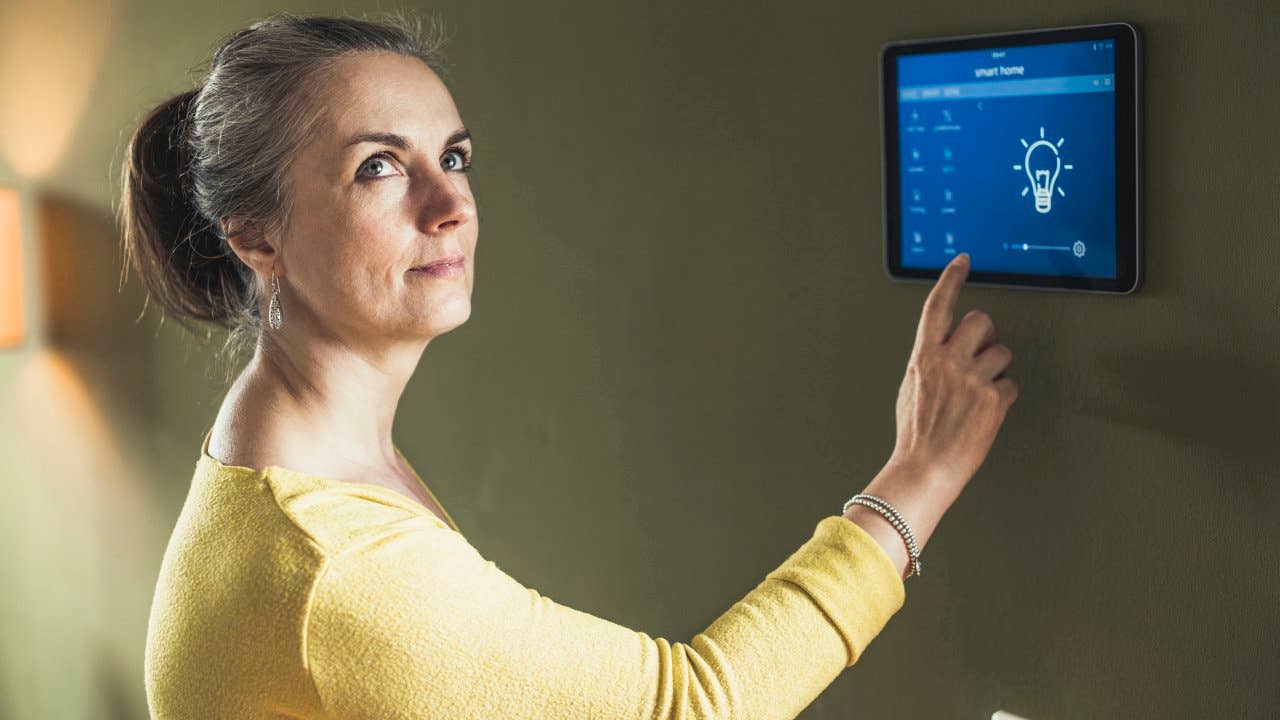Top smart home devices and systems for 2022

Smart homes are all the rage — and by “smart,” we don’t mean spiffy looking. Rather, we’re talking about devices and systems that make use of the Internet of Things to remote-control functions and features around the house.
Using an app or a web portal, a smart home system allows you to control your locks, lighting, thermostat, security and other features through your smartphone, tablet or laptop. You can set one up to automate tasks, such as turning on the lights before you arrive home from work or turning the heat down as you leave for the day. It allows you to check in on your house when you’re away on a trip.
Not only do you gain convenience, you can save money with smart systems. Many homeowners insurance companies offer discounts if you install a security system equipped with an alarm, door and window sensors and motion sensors. And you could save on energy costs by adjusting your thermostat so you’re not using lots of heat or air conditioning when the house is unoccupied.
Not surprisingly, these benefits make smart home devices an enticing choice — so much so that 69% of U.S. households have at least one smart home item. If you’re in the market, here are some of the latest and greatest gadgets available.
Energy monitors
An energy monitor helps you detect areas of energy waste by monitoring the electrical output of appliances you’re using (or that you’re not using, but are plugged in). Though individual plugs have long been around for single outlets, there are now whole-house power monitors that track usage of appliances throughout the home.
For example, the Sense Energy Monitor (one of the highest recommended brands) functions like a small computer, constantly analyzing where and when energy is going. This sort of tool allows you to monitor the electric usage of particular appliances (as big as a refrigerator or as small as a clothes iron), make adjustments to lower energy consumption, and work with smart assistants to follow voice commands. You can use it to check if devices are on or off, too. But you’ll likely need an electrician to install it, as the monitor gets attached to your home’s electrical panel.
Smart locks
Smart locks provide another layer of security, featuring logs that allow you to see when someone arrives and leaves in real time. You can review the log to check when your kids arrive home from school, whether the house or pet sitter arrives on time, if UPS dropped off the package like its email notice said it did. You can also assign temporary codes for those who need short-term access to your home, like a contractor or real estate agent.
The August Wi-Fi Smart Lock is often cited by real estate pros, as it offers exceptional connectivity through Wi-Fi and simple installation. “Thanks to the simplicity of this smart lock, all a homeowner needs to do is install it to the doors and invite the people who need access,” says Vicky Norfaul, owner and associate broker of the Platinum Real Estate Group in northern Virginia. “The access can be controlled easily through the home solution’s app and software, and the invitation can be extended or withdrawn anytime.”
Smart doors
Going the smart lock one better is the smart door. Masonite’s M-Pwr Smart Door is the first to offer a Yale smart lock, along with other devices like motion sensor lights and a Ring video doorbell, in the same package, like a mini-security system. Connected to your home’s power source, it’s always on (with a battery back-up if the power goes out). You can use its mobile app to monitor who knocks on your front door and receive notifications if it remains open. The doors are made of durable fiberglass and come in a variety of colors and styles.
Smart thermostats
Smart thermostats allow you to set your room temperature even when you’re hundreds of miles away from home, allowing you to save on energy bills by setting your thermostat higher (in summer) or lower (in winter) when you leave for prolonged periods. CNET, Bankrate’s sister site, recommends the Amazon Smart Thermostat. It’s affordable, Energy Star certified, and its touchscreen interface is simple to use.
Smart security systems
Keeping your family protected is paramount. And smart security systems come equipped with everything you need to provide peace-of-mind protection. The Vivint Smart Home system is among the best available, according to tech experts.
The system features security cameras, window/door/motion sensors, and a hub panel. Most importantly, it offers 24/7 monitoring with a subscription. If a sensor detects glass breaking or something trying to break in a door, it notifies you and first responders. Moreover, you also receive 14 days of video clip storage, in-home installation and warranties on all the equipment. Best of all, it integrates with other smart home ecosystems to allow you to manage everything from lighting to security cameras from your phone or tablet.
Smart lighting
With smart lighting, you can turn on and off lights with just the press of a button from your smartphone. The Wyze Bulb is a wise entry point. You can buy a white light or upgrade to the LED version, where you can change colors based on your mood. Each Wyze bulb uses Wi-Fi radios, allowing you to control its functions through the Wyze mobile app, without having to wire it to routers or other hardware. Ranging from 880 to 921 lumens, they’re among some of the brightest smart lights you can find, too.
Smart vacuums
Smart vacuum cleaners have come a long way since their inception. Now, they can navigate the twists, turns and corners of large and small homes alike. The iRobot Roomba i3 EVO keeps track of the areas it cleans, handles thick carpets and rugs (formerly a weak spot of robot vacuums) and is more than capable of picking up thick pet hair. Use the Wi-Fi app to turn the vacuum on and off or set an automatic cleaning schedule. Its smart mapping technology lets you give you precise commands of which rooms the vacuum should clean and when.
Home assistants
Smart home assistants: They’re not just for playing music anymore. Devices such as Amazon Alexa or Google Assistant, can act as command central for your smart home, connecting each compatible component. Nick Good, a real estate broker with The Good Home Team in north Texas, says, “These smart devices can assist you in adjusting the temperature and lighting of your home with voice commands.” Moreover, if you have an Android device, you can use Google Assistant to access your shortcuts. Once you ask the assistant to open your shortcuts, it suggests features automatically, such as ordering groceries.
Things to consider with smart home devices
Advantageous as they are, smart devices do come with some caveats.
Installation difficulties
If you plan to use an energy monitor or home security system, it is wise to consult with an electrician. Some do-it-yourself systems take only a few minutes to set up. If you don’t have any experience with the equipment, however, it might be best to pay for a professional to install it; in fact, if it is directly connected to your power box (as the whole energy monitors are), it’s vital.
Compatibility issues
Another common issue: One part of your smart home ecosystem doesn’t play well with devices from different manufacturers. For example, the Amazon Smart Thermostat doesn’t pair with the Apple HomeKit or Google Assistant. Therefore, if you already have a personal assistant or other smart home devices, make sure the new one is fully compatible, or else you’ll have to control it separately from the rest. Before you fall in love with a product, be sure to carefully read all specs and ensure it’ll work with your type and model of phone, tablet or computer.
You may also like

Top 5 ETF categories to watch in 2025

Which states have the richest homeowners?

Best banks for startups in 2024



